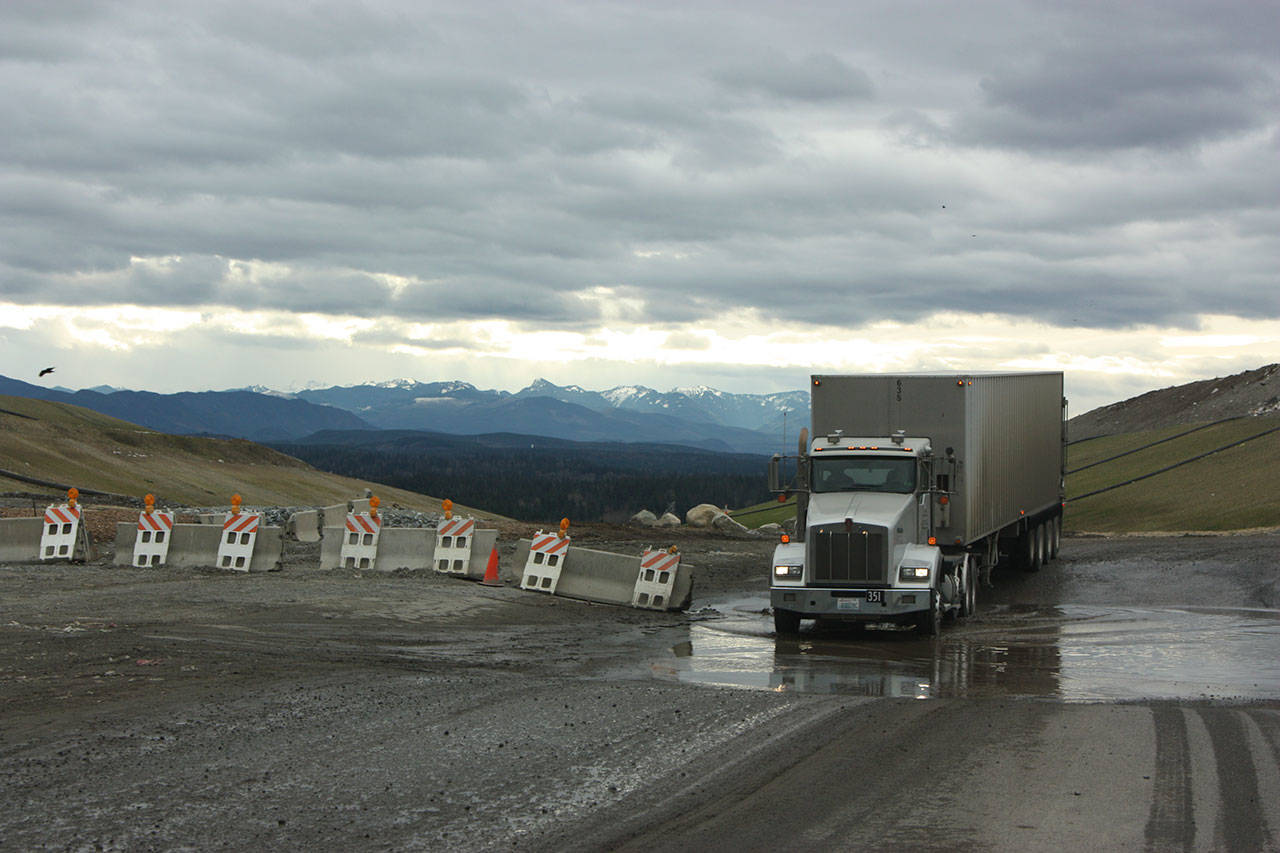A long-awaited study has arrived comparing two options for King County as it decides how to deal with its trash in the future — should the county ship its trash to another landfill or build a waste-to-energy plant?
The study comes as the county is figuring out how to dispose of trash in unincorporated areas, as well as 37 of the county’s 39 cities. The Cedar Hills Regional Landfill is owned and operated by the county, and the final destination for much of the trash generated within it, with the exception of Seattle and Milton. But the landfill is expected to reach capacity within the next decade.
The 300-page report, conducted by Arcadis, fleshes out the two main options facing the county. In addition to the two options in the report, the county also could keep expanding its landfill, but prior settlement agreements and push-back from neighboring communities have placed restrictions on expansion.
The report found that in the next 20 years, both the freight and waste-to-energy (WTE) options will cost about the same. But looking out to 50 years, the WTE plant would cost between $4.3 and $7.2 billion less, depending on how much trash the people in the county generate. The total cost for construction and operation of the WTE plant ranges from less than $7 billion to nearly $8.9 billion, while shipping waste will cost from $11.3 billion to $16.1 billion.
Part of the discrepancy between the numbers is the high up-front cost of building a WTE plant. A plant capable of burning 3,000 tons of trash per day would require about 43 acres and cost $3.7 billion. A larger plant, which could churn through 4,000 tons of trash, would need 55 acres would cost more than $5 billion.
Once the WTE plant is complete, the report said the ongoing maintenance costs will eventually dip below the ongoing costs required to ship trash out of the county by the container. However, there are significant obstacles facing a WTE plant even if it is cheaper. One of the hurdles would be securing an air permit and removing or scrubbing CO2 emissions from the plant.
A WTE plant takes trash, burns it and generates energy. It was expected to generate .42 tons of CO2 per ton of trash processed compared to between .13 and .34 tons of CO2 for shipping it on freight.
However, if the plant was able to use electricity generated to offset existing demand, scrub CO2 and recycle more metals and ash, it could end up carbon-negative, as opposed to freight which has a fixed emissions scheme.
But even with emissions offsets, the plant likely would need carbon capture and sequestration technology installed to operate past 2030, when state law mandates all electricity producers in Washington must be carbon neutral. By 2045, all electricity in state grids must be sourced from renewable or non-emitting sources.
The technology to capture the carbon exists, the report said, but demonstration projects have been small, and a potential King County plant would be the first in the nation to use it. The CO2 would be captured from emissions and turned into tablets which could be buried or sold. But if that doesn’t pan out, the plant could run the risk of being non-compliant with state law, and would need an exemption from the state, like Spokane’s WTE plant.
Landfills aren’t free from emissions either. As biomass decomposes it produces methane, a gas around 10 times more powerful than CO2, although it dissipates from the atmosphere much more quickly.
For rail, the county would need to find a location or build a transfer and load facility on between 15 to 25 acres. It would need to be less than one mile from an existing mainline track and be near a highway or arterial road. Few suitable sites exist in the county, the report said. However, the timeline for this option would be between three to six years, shorter than the eight to 11 which the WTE option would require.
Both the Union Pacific Railroad and BNSF Railway have expressed interest in shipping King County waste. Landfills in Roosevelt as well as Arlington and Boardman, Ore., were identified as destinations. The report noted that both railways would likely require short five- to 10-year contracts to adjust for fuel cost and capacity pricing.
Of the two options, the report recommended the county begin working on a WTE plant.
“Due to the long-term cost savings, improved recycling rates, and potential for net negative (greenhouse gas) emissions with the inclusion of carbon capture technology, WTE facility disposal will prove a significant financial and environmental benefit to the county,” it said.
With the report in hand, the county council will need to decide which option to pursue with time to find an option dwindling.
Talk to us
Please share your story tips by emailing editor@kentreporter.com.
To share your opinion for publication, submit a letter through our website https://www.kentreporter.com/submit-letter/. Include your name, address and daytime phone number. (We’ll only publish your name and hometown.) Please keep letters to 300 words or less.

